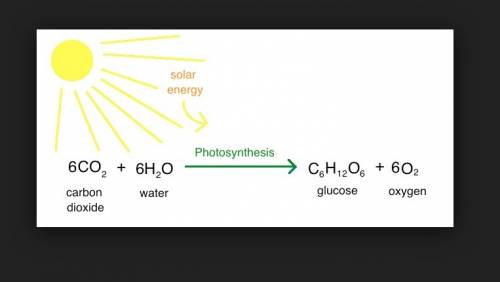
Biology, 02.08.2019 22:00 brandyleemom3
Which of the following summarizes photosynthesis? glucose + carbon dioxide → oxygen + water carbon dioxide + water → glucose + oxygen + water oxygen + water → glucose + carbon dioxide + water carbon dioxide + oxygen → glucose + oxygen + water

Answers: 2


Another question on Biology

Biology, 21.06.2019 20:00
In eukaryotes, genetic information is passed to the next generation by processes that include mitosis or meiosis. which of the explanations identifies the correct process and supports the claim that heritable information is passed from one generation to another? a. mitosis, followed by cytokinesis, produces daughter cells that are genetically different from the parent cell, thus insuring variation within the population. b. during mitosis, dna replication occurs twice within the cell cycle to insure a full set of chromosomes within each of the daughter cells produced. c. in asexual reproduction, a single individual is the sole parent and passes copies of its genes to its offspring without the fusion of gametes. d. single-celled organisms can fuse their cells, reproducing asexually through mitosis to form new cells that are not identical to the parent cell.
Answers: 1

Biology, 21.06.2019 20:50
Dna has unique properties that allow it to accurately retain genetic information, even after multiple rounds of replication. one aspect of dna that allows it to accurately store genetic information is the base pairing from chargaff\'s first rule of the four nucleotide bases. if the c content of a dna molecule is 22%, what are the percentages of the remaining bases?
Answers: 1

Biology, 21.06.2019 23:30
What is a traditional chinese touch therapy involving finger pressure applied to specific areas of the body to restore the flow of qi.
Answers: 1

Biology, 22.06.2019 02:50
Keeping in mind the life cycle of bacteriophages, consider the following problem: during the reproductive cycle of a temperate bacteriophage, the viral dna inserts into the bacterial chromosome where the resultant prophage behaves much like a trojan horse. it can remain quiescent, or it can become lytic and initiate a burst of progeny viruses. several operons maintain the prophage state by interacting with a repressor that keeps the lytic cycle in check. insults (ultraviolet light, for example) to the bacterial cell lead to a partial breakdown of the repressor, which in turn causes the production of enzymes involved in the lytic cycle. as stated in this simple form, would you consider this system of regulation to be operating under positive or negative control?
Answers: 1
You know the right answer?
Which of the following summarizes photosynthesis? glucose + carbon dioxide → oxygen + water carbon...
Questions

Computers and Technology, 21.02.2020 17:22

Mathematics, 21.02.2020 17:22








Mathematics, 21.02.2020 17:22


English, 21.02.2020 17:23











